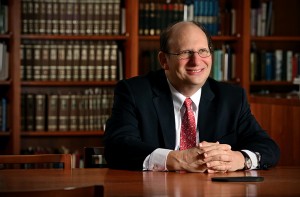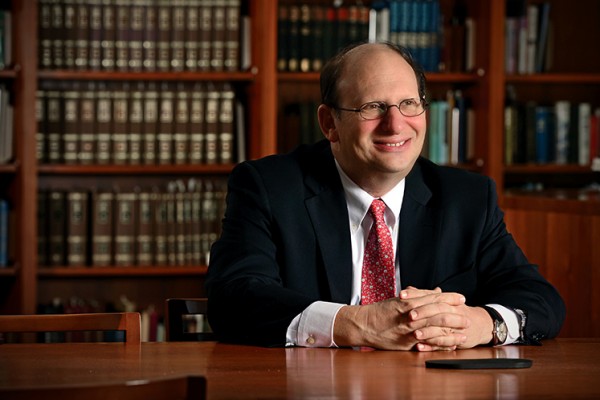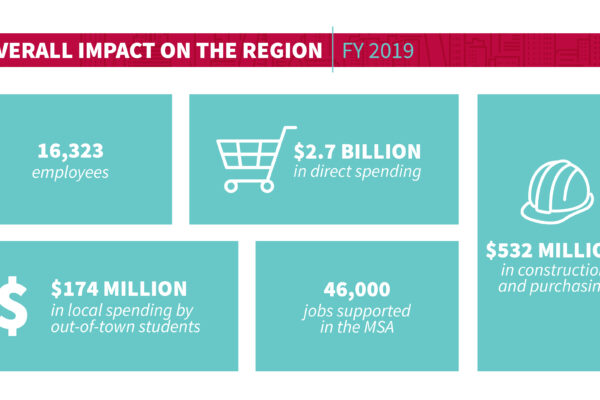
Incomes in the City of St. Louis have been rising — but only for white residents. Development is booming — but only in the central corridor. And the population is increasing — but, again, only in select neighborhoods.
“It really is a tale of two cities,” said Henry S. Webber, executive vice chancellor and chief administrative officer at Washington University in St. Louis and professor of practice in the Sam Fox School of Design & Visual Arts and at the Brown School. “Our close analysis of the broader region and the city tells a very complicated story. There is much that is very positive — but much that is quite distressing.”
At the 2020 Day of Dialogue & Action, Webber will present the economic and demographic profile of the St. Louis region. He and Chancellor Andrew D. Martin will then ask participants to break into small groups and provide their insight, feedback and ideas about how Washington University can be “In St. Louis, for St. Louis.” The session is from 2:30 to 4:15 p.m. at Hillman Hall’s Clark-Fox Forum.
Here, Webber shares more findings from his study, “A Strategic Assessment of St. Louis: Growth and Equity,” and what role Washington University can play in the region’s future.
What were the key factors you studied in your analysis?
Webber: We took three major issues — income growth, population growth and income differentials between white and black residents — and asked, ““What’s happened in the City of St Louis and the St Louis region from 2000 to 2016?” We looked at income because we all want our kids to do better than we did. And per capita income has gone up in our region, particularly for white residents of the City of St Louis. For black residents of the city, income trends are moving in the opposite direction.
We also looked at growth. And while the St. Louis region has grown, it has grown far more slowly than many other regions in the nation. The question here is, Can we arrest the slide? Stagnant growth is much more pernicious than it may appear. If you’re not growing, you are less competitive for workforce, corporate headquarters and transportation. Stagnant growth even has effects on the university. The talented students and faculty we want to attract want to be, for the most part, in large, dense, diverse cities.
And we also studied whether we are dividing the pie in a way that is fair and equitable. Unfortunately, black-white income differentials in the St Louis region are growing.
What is going on there?
Webber: It’s impossible to understand these patterns without understanding the transition in the American economy and the movement away from manufacturing jobs and the growth in education and health care. The neighborhoods in the city that are booming are the ones close to Washington University, BJC, Cortex, Saint Louis University and SSM Health. Across the nation, we are seeing this trend. What’s the largest employer in Pittsburgh? Not U.S. Steel but the University of Pittsburgh Medical Center. But, in other ways, St. Louis is unusual. As in other regions, you’ve seen the back-to-the-city movement, but it’s been more diverse in other cities.
So what can Washington University do about these trends?
Webber: That’s exactly what we’ll be talking about at Day of Dialogue. We are a strong anchor institution, but there is more we can do. Some ideas: can we make sure jobs with us and with our partners and other institutions are fully accessible to people who live in areas of poverty? That will take extra effort with training, education and outreach. We also need to think about engaging in more neighborhood support activities such as those that have been successful in Forest Park Southeast and Skinker-DeBaliviere.
Expanding our Live Near Your Work program was a good step in that direction. Can our academic programs, our volunteer programs for students, faculty and staff, our institutional activities and our research initiatives add more value to the St Louis region? That‘s where our community can help. Our community is an enormous resource. They live in these neighborhoods, raise children in these neighborhoods and volunteer in these neighborhoods. If we are really going to be “In St. Louis, For St. Louis,” all of us need to be part of the conversation.


